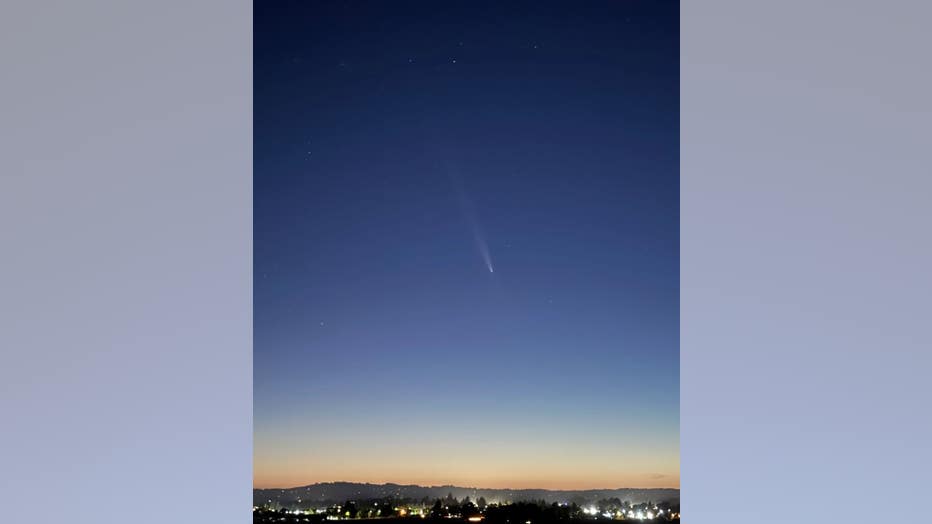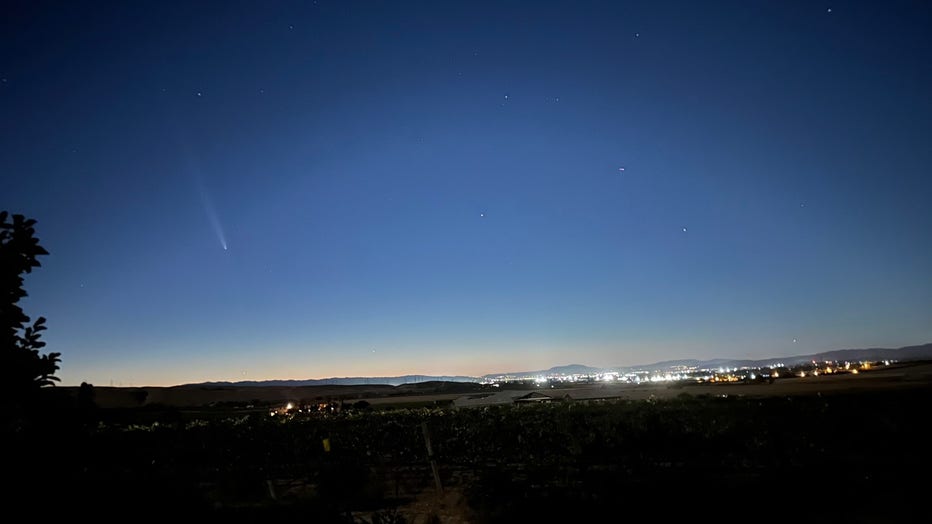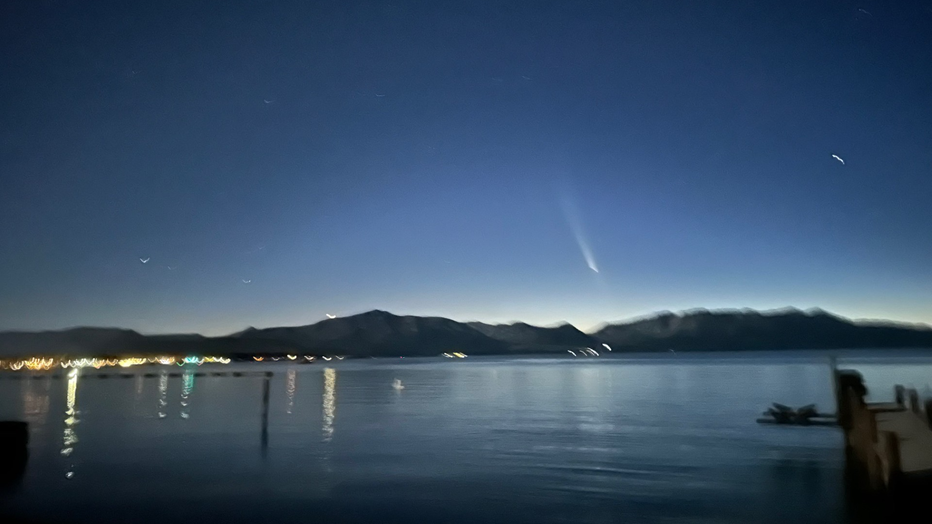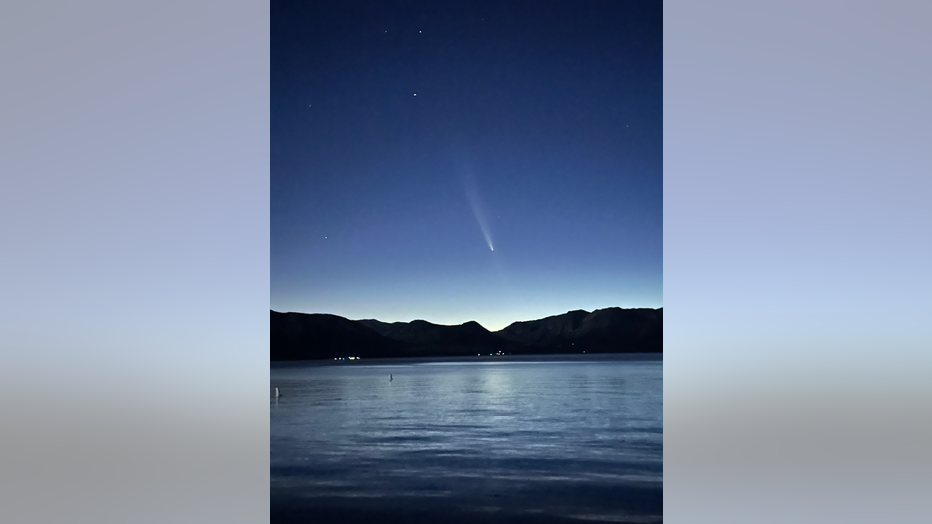Comet, approaching closest point to Earth, soars over Bay Area skies
C/2023 A3 over Santa Rosa
SANTA ROSA, Calif. - Comet C/2023 A3 (Tsuchinshan-ATLAS), the comet some call the ‘comet of the century’, was captured soaring across the sky above Santa Rosa by KTVU photographer Jaden Schaul.
On Monday, just before 8 p.m., the much anticipated comet, which has reached its closest point to the Earth, put on a show for those who were watching in the Bay Area.
C/2023 A3 was discovered on Jan. 9, 2023 at an observatory in China. According to Space.com, it was first thought to be an asteroid.
National Geographic says it will be another 80,000 years before this comet is seen again.

C/2023 A3 over Santa Rosa. Photo by Jaden Schaul.
A KTVU viewer was also able to capture the phenomenon not only once, but twice. First, Darcie Kent saw the comet while at South Lake Tahoe. She said she actually cried when she saw it the first time. Then, the next day after looking up information about the comet online, she saw it again from her vantage point in Livermore Valley. Kent said this was seen as workers harvested the Malbec grape crops.
What an amazing feat to not only see it twice in two locations, but to also have documented it.
Others posted on social media that they saw the comet in places like Las Vegas, Boulder, and Tuscon.
The comet put on a spectacle at the end of September when it danced with the Northern Lights. A videographer posted this illuminating timelapse of the comet juxtaposed against the Golden Gate Bridge on Sept. 27.
NASA researchers at the time predicted if the comet survived, it would swing back to make another appearance around Oct. 12. That prediction came to fruition on Monday.
While this ancient comet is flirting dangerously with the sun, NASA says it was about 44 million miles away from Earth when it was captured in their ‘Image of the Day’ back on Sept. 28. The photograph was taken from the International Space Station as it orbited 272 miles above the South Pacific Ocean southeast of New Zealand just before sunrise.
The amount of gas and dust the comet gives off determines how bright it appears in the sky. The comet's visibility is best above the western horizon after sunset. Keep an eye to the northwest sky for the next two weeks, although your chances of seeing the comet are diminishing as visibility fades.
If you'd like to learn more about these "cosmic snowballs", check out NASA's explainer, here.
KTVU's Jaden Schaul and Roberta Gonzales contributed to this report.

Photo by: Darcie Kent in Livermore

Photo by: Darcie Kent in Livermore

Comet over South Lake Tahoe. Photo by Darcie Kent.

Comet over South Lake Tahoe. Photo by Darcie Kent.
Featured
Watch: 'Comet of a century' puts on beautiful show while zooming by Earth
Astronomers said Comet Tsuchinshan-ATLAS reached perihelion, its closest point to the Sun, on Sept. 27 and will spin back around for another visit to Earth's neighborhood. On or before Oct. 12 will be the next chance to see the celestial show.


